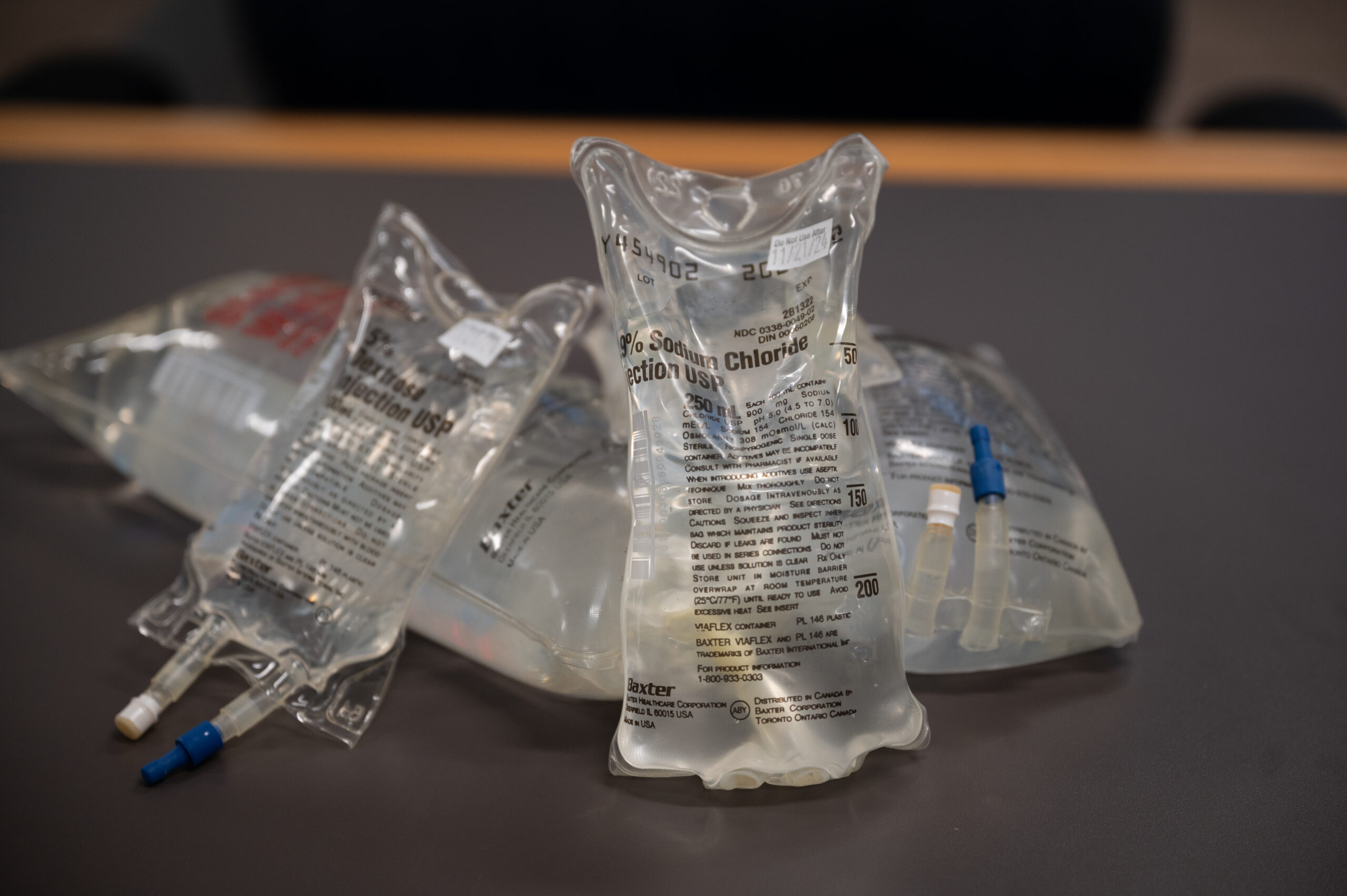
Alaska health care facilities are conserving IV and intravenous fluids as part of a statewide response to supply shortages. Hurricane Helen halted production at Baxter International, the nation's largest supplier of intravenous fluids and outpatient dialysis solutions. It could be months before the North Carolina facility resumes production.
Coleman Cutchins, a clinical pharmacist with the Alaska Department of Health, said large-scale drug shortages are all too common. But he said he was concerned about the supply disruption.
“Almost every patient admitted to the hospital is given something related to an IV at some point during their hospitalization,” says Cutchins. “There aren't that many manufacturers. In this case, there's one big factory that makes most of these for the U.S., and that factory will shut down completely.”
He said Alaska's medical centers are currently doing a number of things to prevent severe shortages in the future. The Centers for Disease Control and Prevention recommends that facilities monitor their supplies and reduce their use if possible. The CDC suggests taking steps to conserve money, such as waiting to change IV fluids until the bag is empty and helping people drink fluids by mouth if possible.
Cutchins said hospitals can significantly reduce IV fluid usage by following these recommendations.
“There's a huge opportunity to preserve it without significantly impacting patient care,” Cutchins said.
Katchins said if the shortage worsens, the state will step in and coordinate targeted dialogue between health facilities and organizations. At the time of publication, healthcare institutions had not made any major changes to patient care due to the shortage.
A Providence Alaska representative said Baxter is providing about 130 different supplies to hospitals and has “strategies in place to ensure there is no disruption to patient care.” Representatives from the Alaska Native Health Consortium said Baxter is not their supplier but is conserving it to ensure continued availability throughout the state.
According to a Baxter press release, the company is leveraging the global supply of intravenous fluids to help fill the shortage. Baxter said the company is making progress toward reopening and aims to be in full production of IV fluids by early 2025.
RELATED: Unhoused Alaskans are 8 times more likely to suffer severe cold injury than housed people


